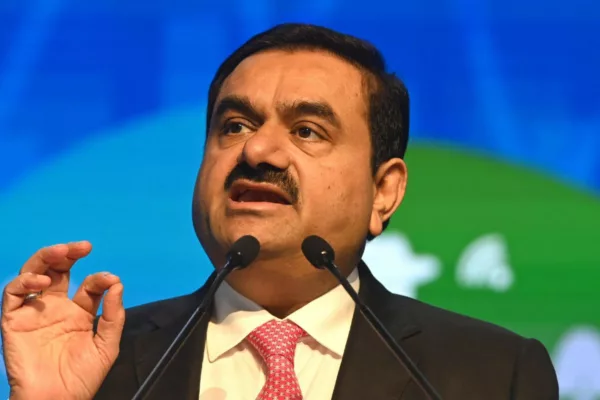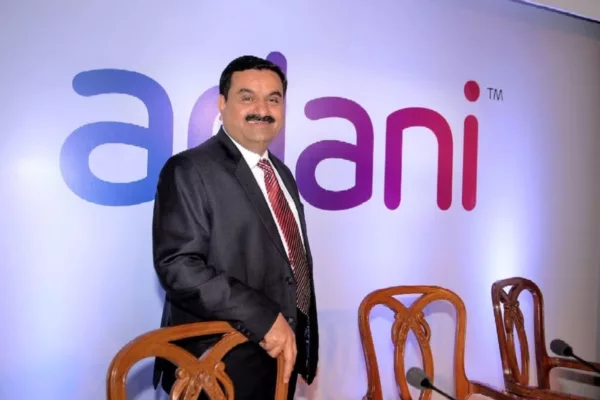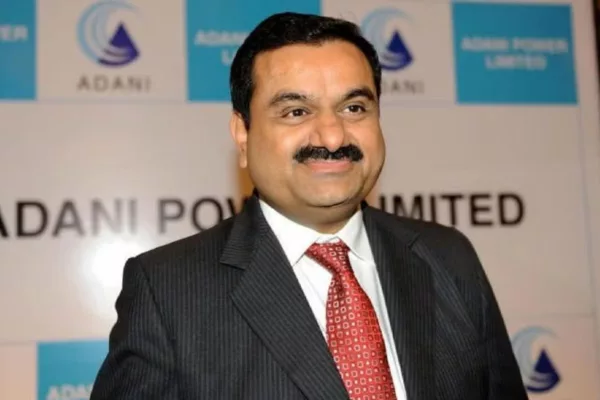Despite Rs. 7000 cr exposure in Adani group firms ; PNB declares its ‘not worried’.
Why PNB denies the Hindenburg Allegation on Adani Group?

Adani Group’s exposure for PNB is Rs 7,000 billion is not a matter of concern.
The managing director and chief executive of Punjab National Bank stated that there is no cause for concern about those charges despite having a total exposure of Rs 7,000 crore to the Adani Group.
US short-seller Hindenburg Research voiced concerns about the debt levels and use of tax havens by Adani Group. The Adani Group asserts that it has complied with all applicable local laws and completed all necessary regulatory disclosures.
PNB CEO Atul Kumar Goel told reporters at a virtual press conference following the company’s quarterly results that “out of Rs 7,000 crore, roughly Rs 2,500 crore is tied to Adani’s airport business.” “Cash flow is supporting the direction we have.”
But according to Goel, the bank keeps a “close eye” on distinctions in how the news about Hindenburg’s research paper is being reported.
He further explained that no loans had been made to the Adani Group by the bank using pledged shares. Punjab National Bank reported a 44% decline in net profit for the three months ending in October as bad loans are to be increased.

The lender’s asset quality improved, with the gross non-performing asset ratio down from 10.48% at the end of the last quarter to 9.76% at the end of December.
At the end of December, its net NPA ratio was 3.30%.
Goel stated that by the end of March, the bank aims to have a gross NPA percentage of roughly 9% and a net NPA ratio of 3%. The bank plans to increase loans by 12–13% and deposits by 8%–9% between 2022 and 2023.
Life Insurance Corp (LIC) does not plan to participate in the ongoing $2.5 billion secondary suit sale of Adani Enterprises. After Hindenburg Research criticised Adani’s group companies’ business practised last week, the Indian company’s stock values have dropped by $65 billion, putting pressure on the affected companies. The report, according to Adani, is unfounded.
The source stated that LIC, the biggest insurer in the country, acquired 5% of the $736 million anchor part of the Adani offering and has no plans to bid for more in the continuing book-building process, which ends on Tuesday.
Shares of Adani Enterprises closed on Monday at 2,892.85 rupees ($35.51), significantly below the offer price range of 3,112 to 3,276 rupees per share, as a result of eroded success following the release of the Hindenburg report. So far, a 3% subscriber rate releases distrust on the subject viability.
The decision-making process is secret, stated that “LIC will not go (bid) for institutional quota at this time.” According to the source, the committee has only authorised the anchor bid, and LIC is moving cautiously.
LIC already owns 4.23% of the flagship Adani company, while it has 9.14% and 5.96% stakes in Adani Ports and Adani Total Gas, respectively. Currently, a situation is developing, and it needs to be explained what the factual position is. Since we are an influential investor, we have the right to raise pertinent issues, and we will undoubtedly do so, according to LIC Managing Director Raj Kumar, who spoke to Reuters.

According to Adani Group, the follow-on public bid pricing has not changed, which refutes rumours. The Adani Group on Saturday denied market rumours that it lowered the subject cost of its Adani Enterprise’s follow-on public offer (FPO), which had a meagre initial reply. “Neither the schedule nor the point price has changed,” the group declared.
On Friday, nearly every national newspaper ran full-page advertisements for the FPO. Still, only 150 crore rupees (or 1%) in proposals were received, which objected to the 14,908 crore rupees the firm hopes to achieve. Any action would suggest this was a horrible start, and the pitifully low number could tell things to come.
“The FPO is fully authorised by all stakeholders, including our bankers” (Follow-on Public Offer). The Adani Group stated, “We are very optimistic about the FPO’s performance. However, bankers believe the business will be forced to either lower the case price or withdraw it entirely. The cost of the Adani Enterprises share is now Rs 2,768, which is 11% less than the FPO price band’s lower limit, which was set at Rs 3,112.
Whatever occurs when the stock market starts will determine everything. Gautam Adani’s wealth has decreased by $26 billion, while the market value of the group’s publicly traded companies has plummeted by a massive $50 billion in just two trading sessions. For sheer speed, it may have even surpassed Elon Musk, whose wealth has dropped precipitously in recent months. That’s easily a record on the Indian stock business and may be global.
Investors will again be closely monitoring market movement. Could Adani send the market spiralling downward? After all, LIC shares dropped by 3.25 per cent, which was not unexpected given that the insurance company lost more than Rs 16,000 crore on its substantial investments in Adani Group enterprises.
Additionally, LIC contributed around $37 million to the Adani Enterprises FPO. In Adani Group companies, LIC has already made investments of Rs. 74,000 crores. In the Adani Enterprises FPO, there are more than 30 institutional investors in addition to LIC.

State Bank of India, an essential lender to the Adani Group and another bank stock that was severely damaged, fell by 5.06 per cent on the NSE. PNB dropped by 5.40 per cent, and Bank of Baroda suffered a 7.36 per cent loss. While keeping an eye on events, brokerage company Jefferies stated: “We do not see a major threat to the Indian banking industry.”
Additionally, according to brokerage firm CLSA, “PSU banks do have significant exposure (30% of group debt), but this debt has not increased over the last three years.” Private sector banks fell on Friday despite being quite cautious about lending to Adani Group enterprises.
According to CLSA, “Private banks’ exposure is below 10% of total group debt, and most banks — including ICICI and Axis — have announced they have mostly financed help with strong cash flows, like airports/ports.”
According to the CLSA analysis, the Adani Group’s new enterprises have accepted big money from abroad. According to CLSA, most other finance for the group’s unique experiences and acquisitions has come from foreign sources.
The group acquired the Indian cement companies ACC and Ambuja Cements, which were a part of the global Holcim Group, for $4.5 billion from a group of 14 international banks, including Barclays, Deutsche Bank, and Standard Chartered. The entire transaction value will be above $10 billion. For its Indian holdings, Holcim was paid $6.5 billion.
According to a few critics, investors may want to buy shares in Adani Group companies because of their share price decline. From a medium- to long-term perspective, the decrease in the group company shares “presents a wonderful option for investors,” according to Deven Choksey, managing director of K. R. Choksey Shares and Securities. Other brokers, though, were more dubious and thought the proposal was overvalued. They emphasised that Adani Enterprises’ shares are still up more than 100% from a year earlier.
The government and the Adani Group have both been under scrutiny from the Congress Party for their alleged close relationship. Jairam Ramesh, the spokesperson for the Congress, stated in a statement: “Typically, a political party shouldn’t respond to research on a specific company or business group that a hedge fund has conducted.
However, the Congress party must react to Hindenburg Research’s forensic analysis of the Adani Group. This is due to the Adani Group being a unique conglomerate with a close relationship with Prime Minister Narendra Modi since he was Chief Minister.
Despite all of its rhetoric on black money, has the Modi government decided to ignore activity by its best corporate group? Is there a tradeoff involved? Will SEBI thoroughly and not merely informally look into these allegations?
“The accusations of financial mismanagement would be bad enough, but what is worst when is that the Modi government may have shown India’s banking markets to systemic risks through the lax investments made in the Adani Group by strategic state things like LIC, SBI and other public sector banks,” Ramesh added in his statement.
edited and proofread by nikita sharma




